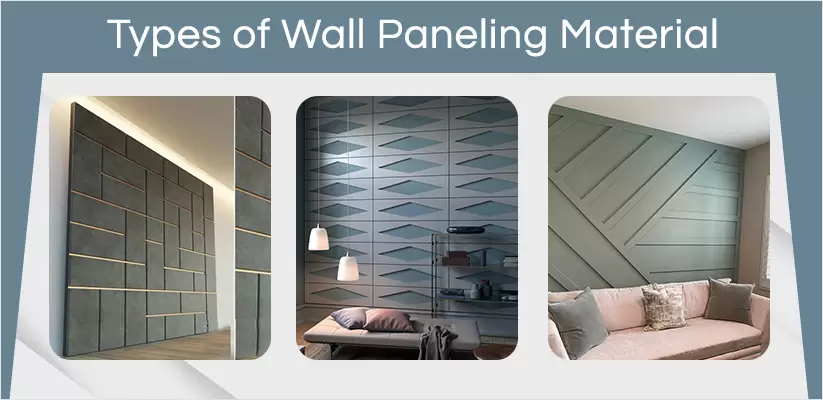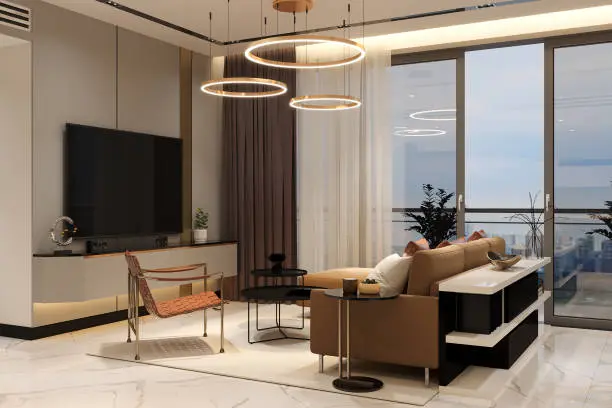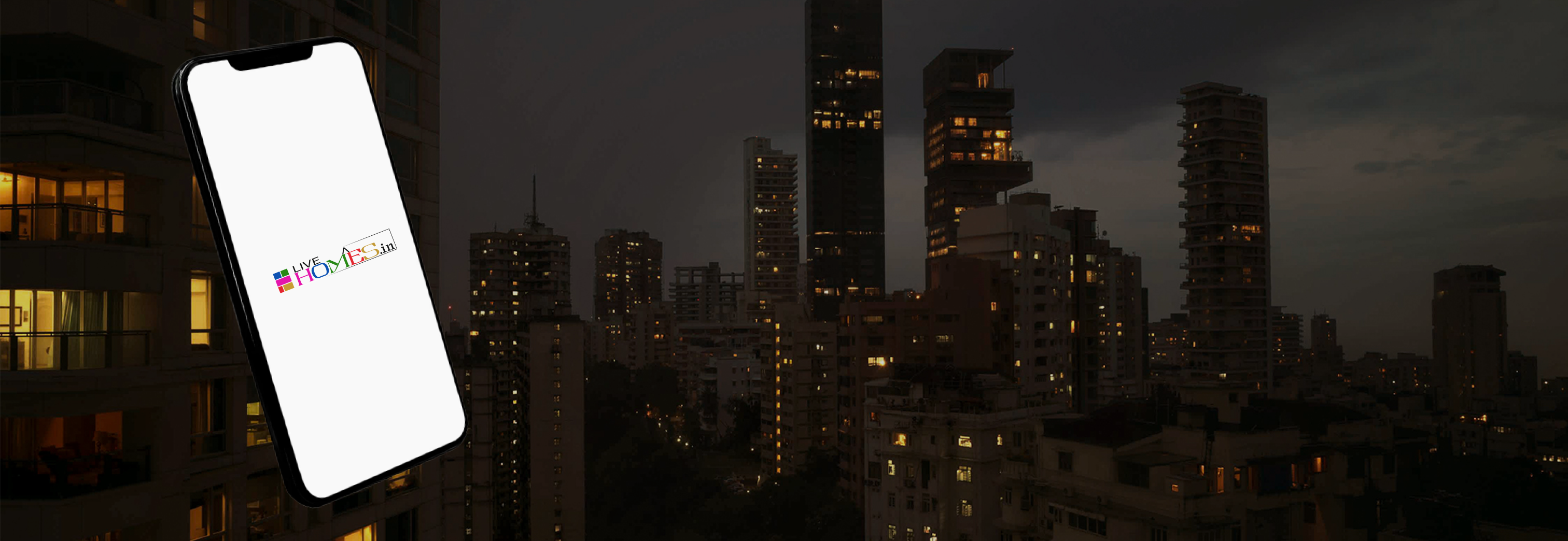Wall paneling is a versatile and functional way to enhance the appearance of any room. It not only adds aesthetic value but can also improve acoustics, durability, and insulation. Here's a detailed guide to the most popular types of wall paneling materials, their features, and uses:
1. Wood Paneling
Types of Wood Paneling
- Solid Wood Panels: Made from high-quality wood like oak, walnut, or pine, solid wood panels offer a classic and timeless look. They bring warmth and texture to any space.
- MDF (Medium-Density Fiberboard): MDF panels are an affordable alternative to solid wood. They are smooth and can be painted or stained in any color or finish.
- Plywood Panels: A budget-friendly option that combines layers of thin wood, plywood panels are strong and versatile. They can be painted or stained and are often used in modern or rustic designs.
Advantages
- Aesthetic Appeal: Wood paneling creates a natural, rich appearance that can be either rustic, traditional, or contemporary depending on the finish.
- Durability: Solid wood is highly durable and can last for years with proper maintenance.
- Insulation: Wood has natural insulating properties, which help in reducing heat loss and sound transmission.
Applications
- Ideal for living rooms, bedrooms, offices, or any space where a warm and inviting atmosphere is desired.
Also Visit: Home Interior Design
2. PVC (Polyvinyl Chloride) Paneling
Overview
PVC panels are lightweight, durable, and water-resistant. Available in various textures, patterns, and colors, they are commonly used for practical applications in humid environments like bathrooms and kitchens.
Advantages
- Water-Resistant: PVC is highly resistant to moisture, making it perfect for high-humidity areas like bathrooms or basements.
- Low Maintenance: PVC panels are easy to clean and maintain. A quick wipe-down is usually all that is needed.
- Variety of Styles: PVC can imitate various textures like wood, stone, and tile, allowing for diverse design options.
Applications
- Perfect for bathrooms, kitchens, laundry rooms, and commercial spaces where moisture control is essential.
3. Fabric Wall Paneling
Overview
Fabric paneling involves the use of soft materials like velvet, linen, or polyester stretched over a backing board. These panels can add a luxurious and plush feel to a room.
Advantages
- Acoustic Benefits: Fabric panels are excellent for soundproofing, as the material absorbs sound and reduces noise levels.
- Soft Touch: They add a soft, luxurious texture that can make a room feel cozy and inviting.
- Customization: Fabric panels come in a wide range of colors, patterns, and textures, allowing for high customization.
Applications
- Ideal for bedrooms, home theaters, offices, or any space where you want to create a warm, acoustically pleasant environment.
4. 3D Wall Paneling
Overview
3D wall panels are made from materials like MDF, PVC, or gypsum and feature geometric patterns that create depth and texture on walls. These panels are a modern and bold design choice.
Advantages
- Contemporary Look: 3D panels give a dynamic, artistic appearance to any room, making them perfect for modern and contemporary interiors.
- Light Reflectivity: The textured surface reflects light in unique ways, making the space appear larger and more vibrant.
- Easy Installation: Many 3D panels are designed for easy DIY installation, as they often come with interlocking systems or adhesive backing.
Applications
- Best suited for feature walls in living rooms, dining areas, or office spaces.
| "BEST BUILDER FLOOR APARTMENT IN CHENNAI" |
5. Stone & Brick Effect Panels
Overview
Stone and brick effect panels replicate the look of natural stone or brick walls but are lighter, more cost-effective, and easier to install. These panels are often made from materials like polyurethane, fiberglass, or faux stone composites.
Advantages
- Rustic Charm: Stone and brick panels bring a rustic, industrial, or modern charm to a space.
- Durability: They are highly durable and can withstand wear and tear, making them perfect for both residential and commercial spaces.
- Lightweight: Unlike traditional stone or brick, faux stone panels are much lighter and easier to install.
Applications
- Perfect for accent walls, fireplaces, or any area where a bold, natural look is desired.
6. Glass Wall Paneling
Overview
Glass wall panels can be used to create sleek, modern aesthetics. They can be clear, frosted, or even printed with custom designs or images.
Advantages
- Sleek and Modern: Glass panels provide a chic and minimalist look that can make a space feel open and airy.
- Light Transmittance: Glass allows light to pass through, which can brighten up a room and create a sense of space.
- Easy to Clean: Glass panels are non-porous, so they’re easy to wipe down and maintain.
Applications
- Often used in bathrooms, kitchens, or modern offices to create an open, airy atmosphere.
Also read: Trendy Color Schemes for Your Modular Kitchen
7. Metal Wall Paneling
Overview
Metal panels are made from materials like aluminum, steel, or copper and are known for their sleek, contemporary appeal. They can be used in both residential and commercial spaces to add a touch of industrial design.
Advantages
- Modern & Industrial Look: Metal panels provide an edgy, modern, and industrial aesthetic to any space.
- Durable & Fire-Resistant: Metal is extremely durable, resistant to scratches, and can withstand high temperatures.
- Low Maintenance: Metal panels are easy to clean and maintain, and they resist fading or discoloration over time.
Applications
- Great for kitchens, commercial spaces, and modern living rooms where an industrial design is desired.
8. Cork Wall Paneling
Overview
Cork is an eco-friendly and natural material that provides a unique texture. It’s soft, sound-absorbent, and a great choice for creating a cozy, warm environment.
Advantages
- Sustainability: Cork is renewable and biodegradable, making it an environmentally friendly option for eco-conscious homeowners.
- Acoustic Insulation: Cork is known for its excellent sound-dampening properties.
- Natural Appearance: It adds a warm, earthy feel to interiors with its unique texture and color variations.
Applications
- Ideal for bedrooms, living rooms, or offices, where both aesthetics and acoustic qualities are important.
Selecting the right wall paneling material depends on your specific needs, style preferences, and budget.
- For a traditional look: Choose wood or fabric paneling.
- For a modern, sleek style: Opt for 3D, glass, or metal panels.
- For moisture-prone areas: Consider PVC or stone effect panels.
- For acoustic benefits: Fabric, cork, or 3D panels are your best options.
- For a rustic or industrial appeal: Stone, brick effect, or metal panels work well.
Each material offers its unique set of features, so make sure to choose one that complements your space’s functionality and design needs!
https://www.livehomes.in/blogs













